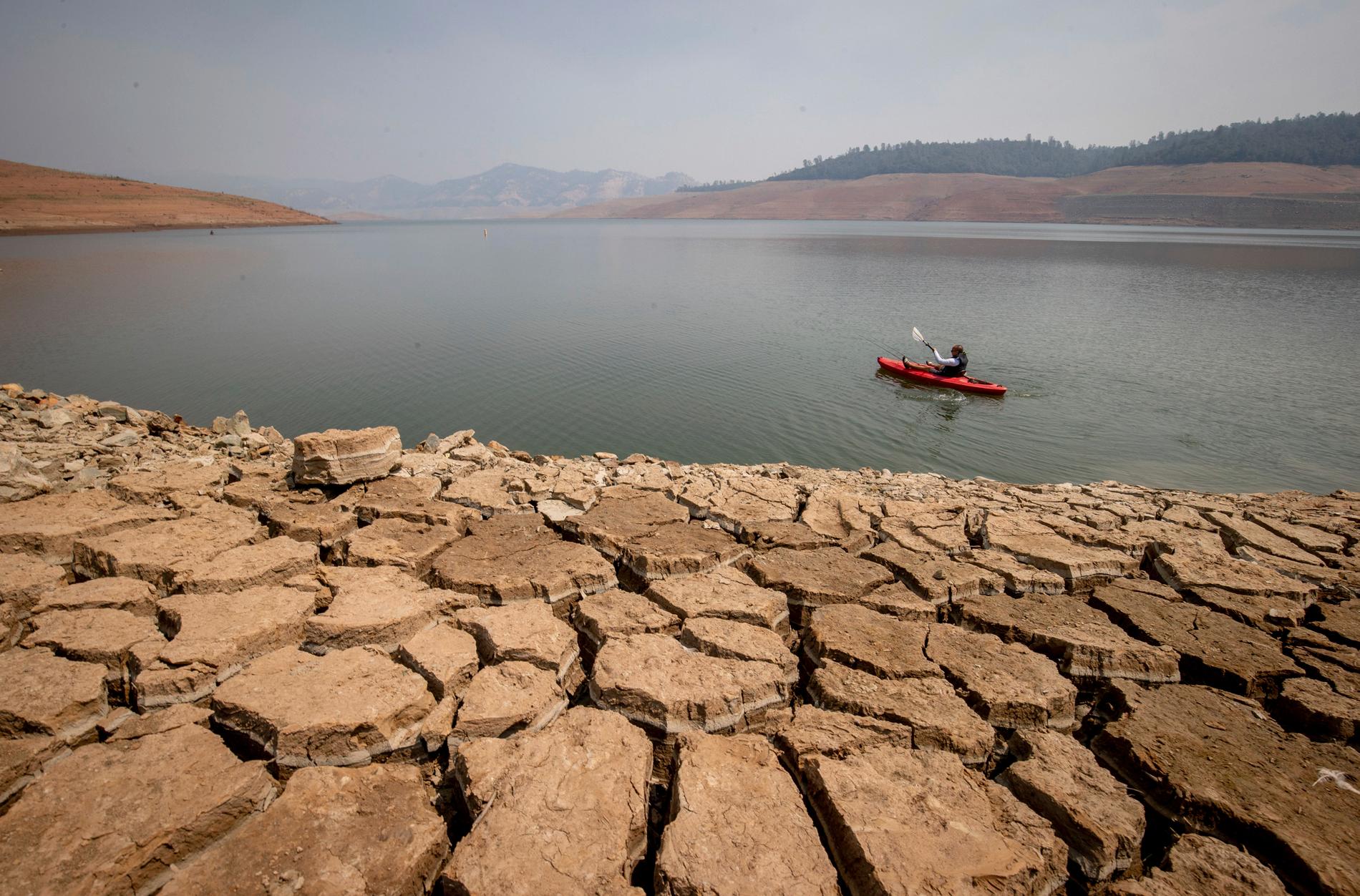
Jonathan Jeppsson
Brutal report from the IPCC – the 1.5 degree target has been met
Published: Less than 20 min ago
Updated: Very recently
This is a commenting text. Analysis and positions are the writer's.
The coal-fired power plants in western Germany. Photo: Martin Meissner / AP
COLUMNISTS
The conclusions of the IPCC's new report are brutal.
The 1.5 degree target looks increasingly doomed - instead we are now heading towards 2.8 degrees by the end of the century.
This decade will be decisive – and will have consequences for future generations for centuries.
But regardless of what we do, the risk is great that the seas will rise for thousands of years.
Today it is presented: The Syntesis Report, the most solid and elaborate summary from the UN climate panel IPCC in almost ten years. It is about 10,000 pages of scientific studies carried out by more than 1,000 researchers.
It is in every way a killer report. Never before has the IPCC gone so far in its conclusions about the human impact on the climate, how vulnerable we are and how big the measures we must take are. Although much of what is said in the report is not news, the UN climate panel has never been more clear than now.
According to the report, there is much evidence that it is time to say goodbye to the 1.5 degree target – the IPCC notes that it is more likely than not that we will go over 1.5 degrees even under very low greenhouse gas emissions. It might not come as a surprise after all – the 1.5 degree target has been a walking zombie after all, a creature that wandered around even though it is actually long dead.
Here are the report's main conclusions in four points:
Point 1: We will probably go over 1.5 degrees
All models that limit warming to 1.5 degrees mean extensive and immediate emission reductions. But there is a huge gap between the plans put forward by the countries of the world and the development we are now seeing. This makes it likely that we will exceed 1.5 degrees in the 21st century and that it will become increasingly difficult to limit warming to two degrees.
And regardless of what we do in the short term, global warming will increase until 2040, mainly due to more and more carbon dioxide accumulating in the atmosphere.
If annual carbon dioxide emissions during this decade continue to be at the same level as in 2019, then the carbon budget for 1.5 degrees is basically depleted entirely – and more than a third of the budget for two degrees warming. Estimates of the emissions from today's existing fossil infrastructure already claim that the 1.5 degree target has been met.
Then the only question is whether we can return below 1.5 degrees again, before the end of the century? This would require huge investments in carbon capture. Some describe this project as the largest industrial project humanity will have to tackle – such is the challenge.
The rain forest in Ghana. Photo: OLIVIER ASSELIN / AP
Point 2: We are steering towards 2.8 degrees by 2100
The reports that the countries of the world have on the table are, as I said, not enough in the long run. Ambitions are simply too low. If we follow the current plans, we are on our way to approximately 2.8 degrees by the year 2100.
But the uncertainties are large – in the best of worlds, with extremely low emissions, we could land on 1.4 degrees between the years 2081–2100. In the worst case, we are up to 4.4 degrees. In that case, it is a world that is not at all similar to the one we have today.
The rising temperatures will hit all regions of the world, biodiversity and our food production.
Point 3: Tipping points threaten to be triggered
For a long time, tipping points, i.e. the threshold points that exist in the climate system and that when crossed contribute to increasing warming, were something that the IPCC did not attach much importance to.
But in this synthesis report, the IPCC speaks clearly that so-called sudden and abrupt climate changes can occur that could raise the sea level by two meters by 2100. Although it is emphasized that there are still large uncertainties in the reasoning, it is believed that a warming of between two and three degrees will cause the ice sheets in Greenland and West Antarctica to be almost completely lost, with several meters of sea level rise as a result.
condemned
"The likelihood of sudden and/or irreversible changes increases with higher levels of global warming," states the report.
“Some future changes are inevitable and/or irreversible but can be limited by deep, rapid and sustained global reductions in greenhouse gas emissions.
It is noted that it is not likely that the Gulf Stream will collapse this century, but cannot completely rule it out.

Lake Oroville in California. Photo: Ethan Swope/AP
Point 4: There is money – but the will is lacking
However, there are things to do, the report states. But it must happen very quickly. “Deep, rapid and sustained reductions in greenhouse gas emissions would lead to a noticeable slowdown in global warming within about two decades, and also to noticeable changes in the composition of the atmosphere within a few years”:
They highlight the sharp price drops and the increased efficiency in new green technology, in solar energy and battery technology. But any path that limits warming to 1.5 degrees involves immediate reductions in greenhouse gas emissions across all sectors this decade, the IPCC claims.
Many countries have signaled that they want to reach net zero by the middle of the century, but how this will be done is shrouded in obscurity.
However, the IPCC believes that it is not the money that is the problem.
"Financing, technology and international cooperation are decisive factors for accelerated climate action," it writes. But if the goals are to be reached, efforts must be multiplied.
The problem is that none of this; the ambition, drive and will required are visible even on the horizon.




Inga kommentarer:
Skicka en kommentar